2005 Japan Trip
We spent a second day in Nojiri (later). Joy's husband Uichi is a sculptor and taught modern art at the famous Tokyo University. He commuted weekly between Tokyo and Nojiri. He was home that day and we enjoyed getting to know him. We were looking at a book on a retrospective of his work.
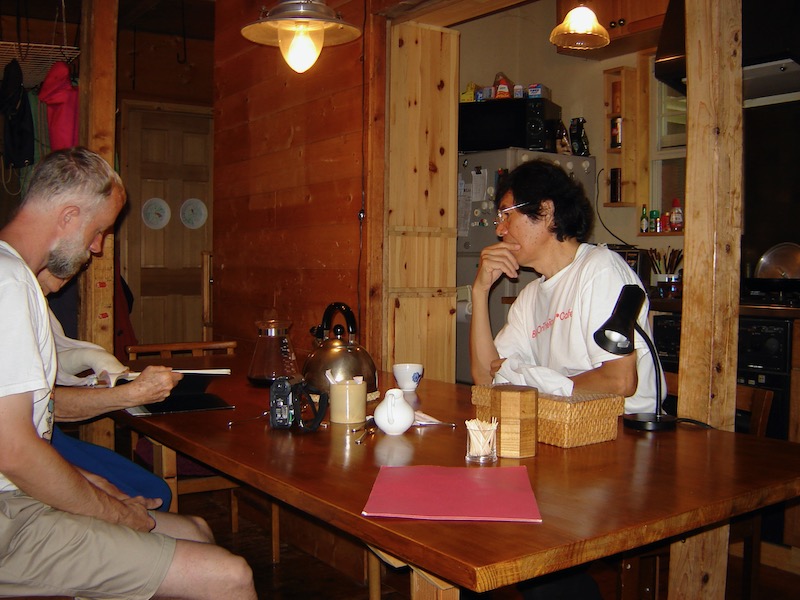
He had one piece in his yard - "Thin Torso". The chest and abdomen of a male figure is visible.

It was originally created in wood. This one is bronze on a stone base.

This day we took a ferry to the island. We went to see a Japanese dance that was to be performed by a friend of Joy's daughter. Again, I was outsized in Japanese sensibilities.
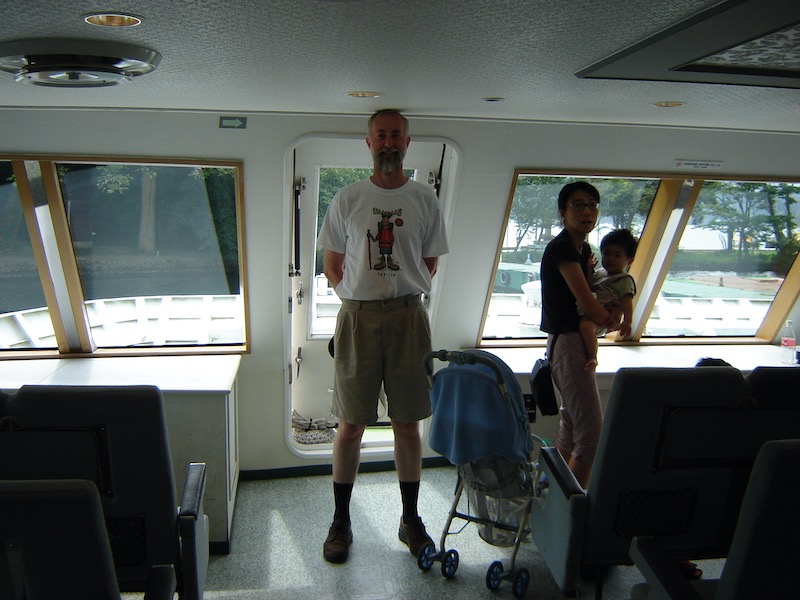
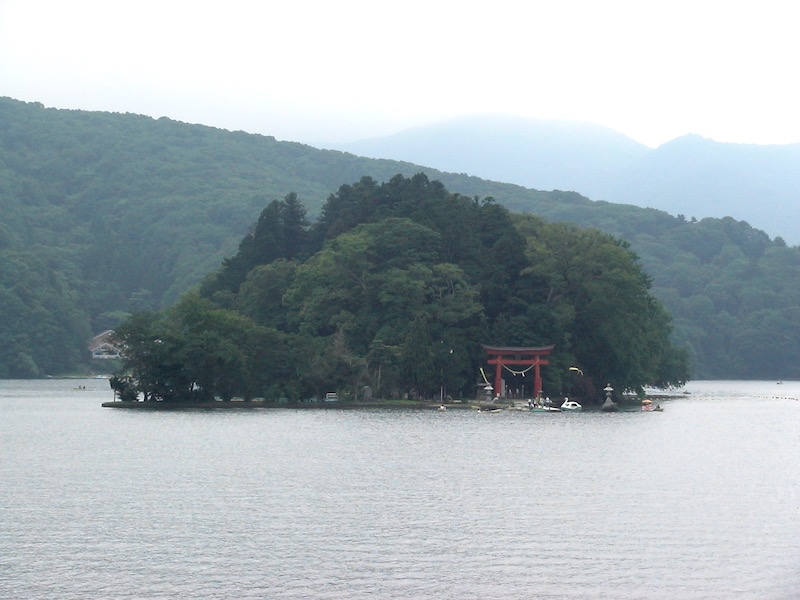
The torii ("bird perch") arch comes from a Japanese myth: The sun goddess had hidden in a cave. The earth people were without sunlight, so they put a perch for a rooster outside. When the rooster crowed, the goddess decided it was morning and came back out.
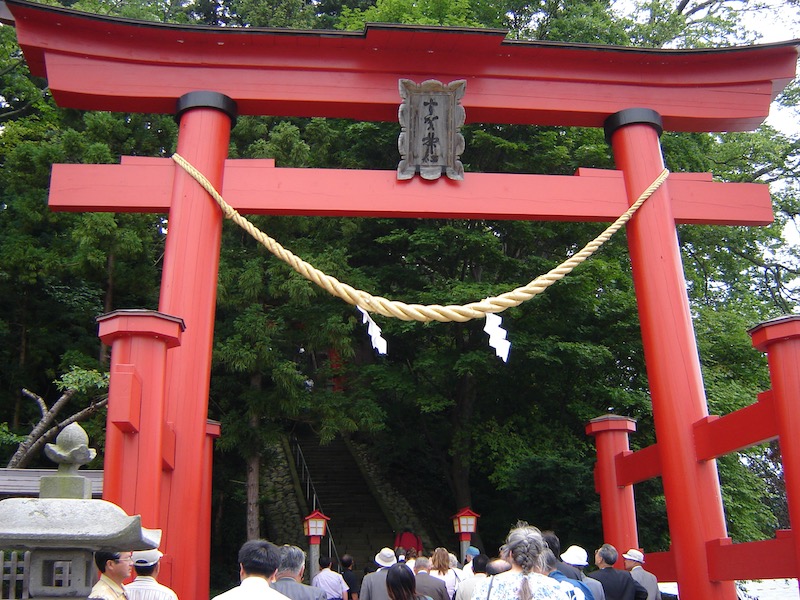
I was pleased to see very large trees on the island. Maybe the trees had not been cut down during the war because it was a place that was sacred to the Japanese.
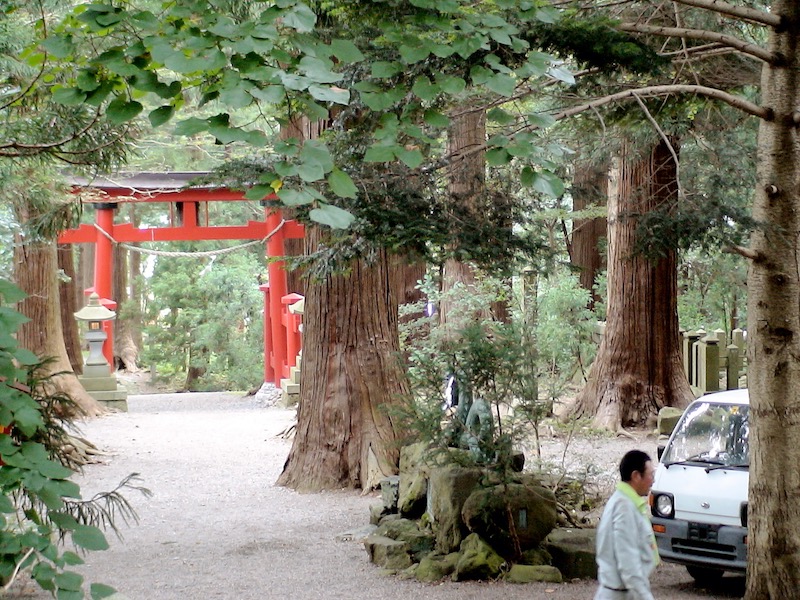
At the entrance to Japanese temples there is a coin collection box and a big rope connected to a bell. They ring the bell to alert the gods and then pray for blessing.

The dance was slow, long and complicated. The dancers did well. It was performed to traditional Japanese music with droning male voices (played from a cassette tape player).

That afternoon we went to the cabin that my Dad built. It is owned by another family now, but we had permission to go inside. Note the middle tree trunk.

Compare to this old winter family adventure picture. (My dad is pulling the sled at left. I am probably the one following him.) The trunk in the middle of the house is that same tree, just smaller.
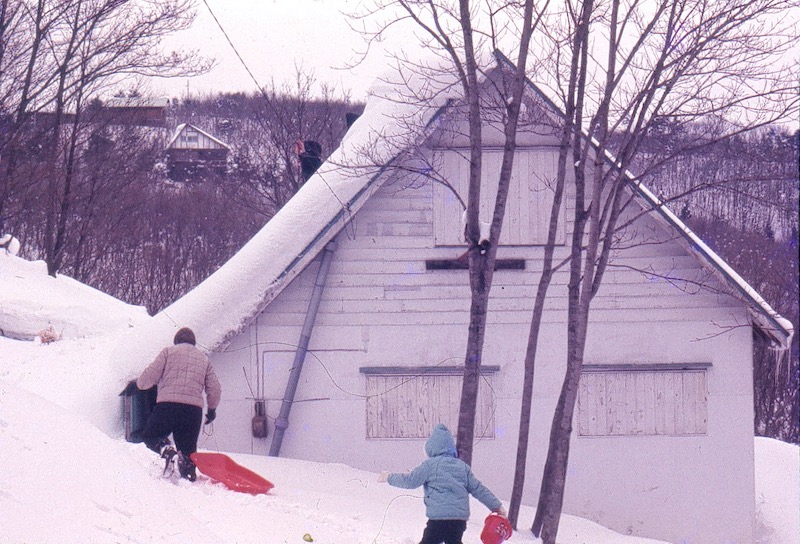
The cabin's main room is small, so it is hard to capture it in photos. New paneling had been put up. However, the floor under the carpet, some funiture and the kitchen sink area were original.

The ropes serve as handrails for the stairs. I remember putting them in. The door to what was Mom & Dad's room is at the left. The cabinet under the TV is original (although we had no TV).
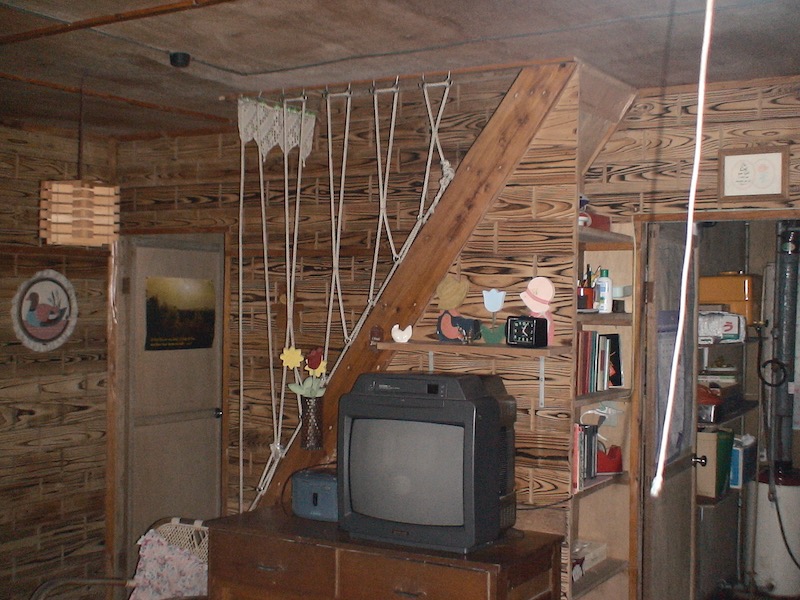
When I was very young, Mom & Dad would put a board over the stair so I wouldn't climb up and risk falling.
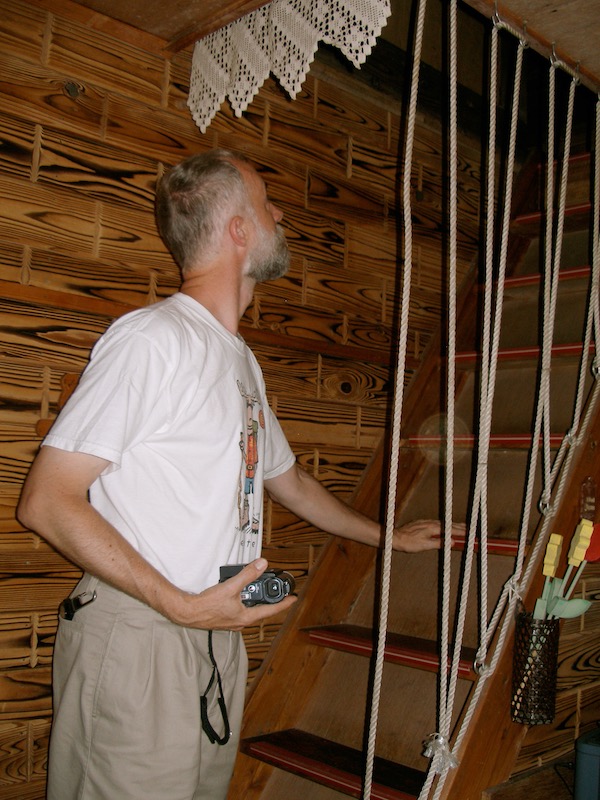
Upstairs, this was Marilyn & Lisa's room.
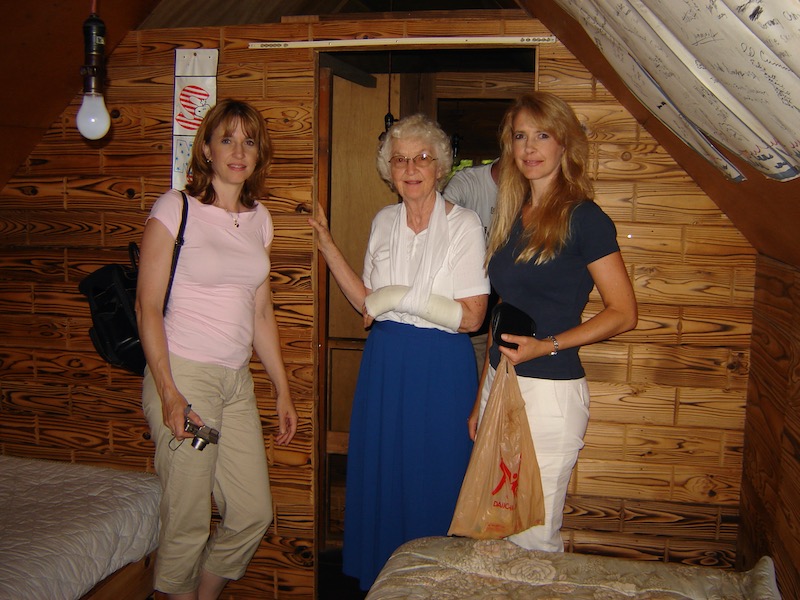
My room was on the other side.
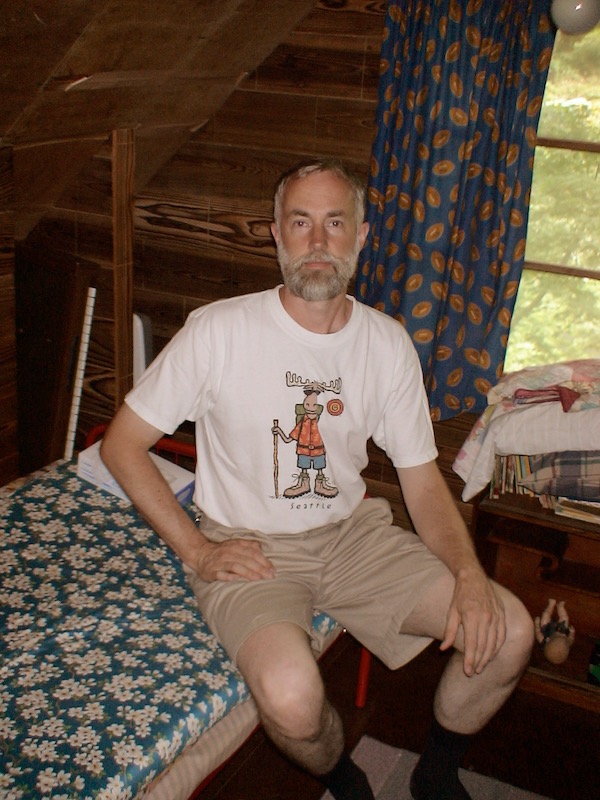
There was a steel barrel between the upstairs rooms (under that black box). It was one of the original ones that my Dad, Leslie Grove, used to ship our stuff to Japan. (L GROVE, YOKOHAMA)
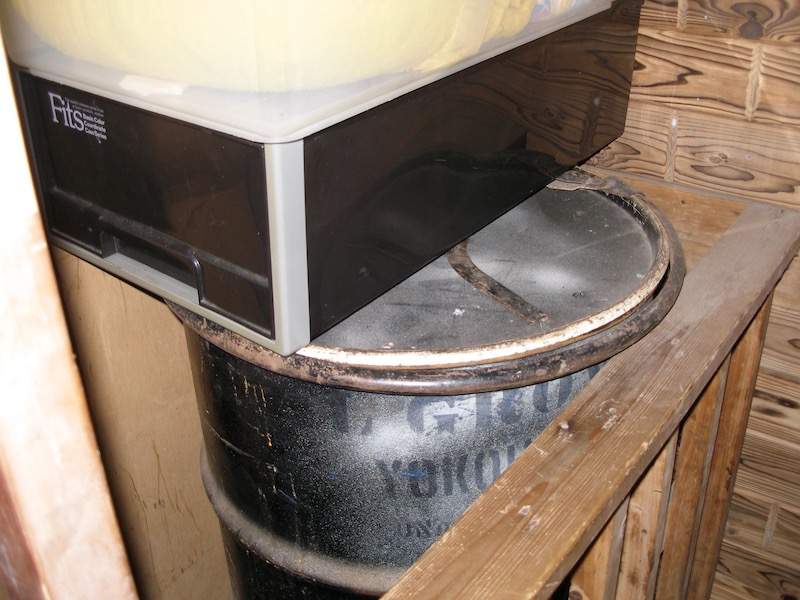
One of the most evocative parts of Nojiri was the paths. Walking the paths really brought me back.

Next stop, the waterfront.
We had to take a photo at this tree again. There were so many good memories created near it.

The kids got right in the water. The octopus was a great toy villain.
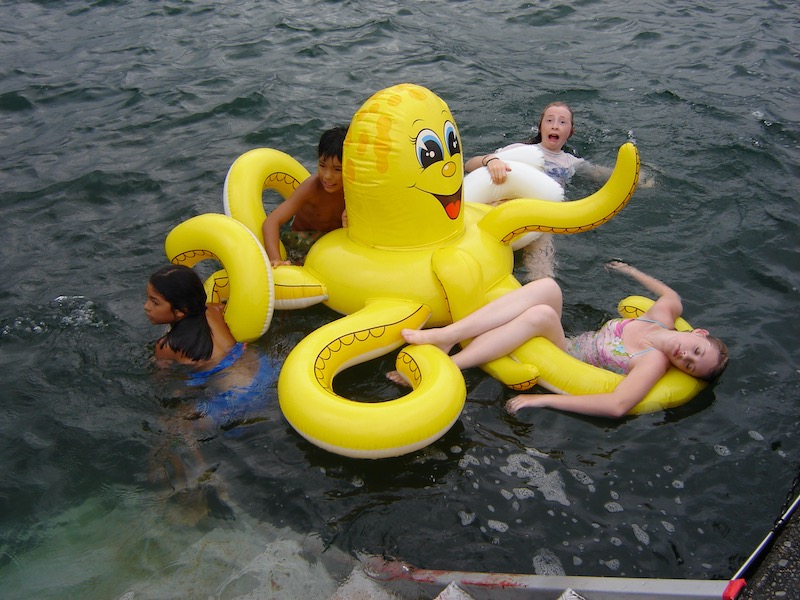
I was glad I decided to go swimming again as well. The water was warm enough I could have been in it all day. Maybe it was just the nostalgia, but somehow the water also felt more real than any place I had been swimming in years.
I joined the kids in playing with the octopus for a while.
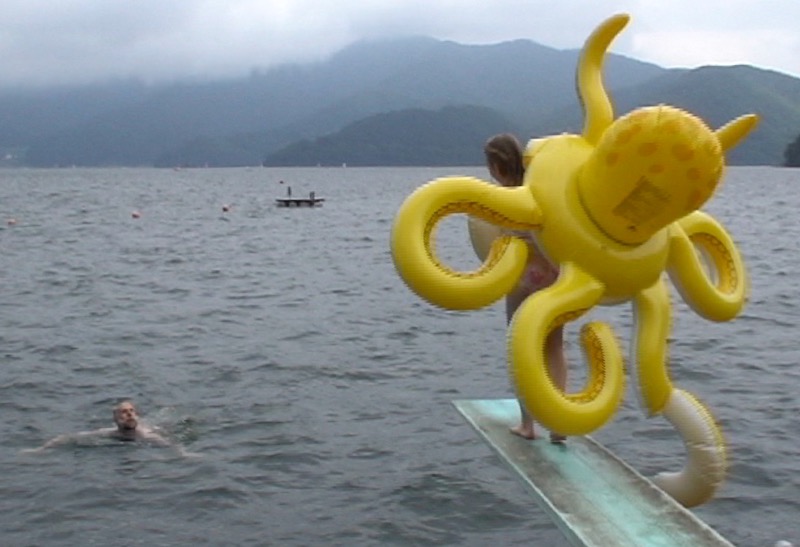
Our last event of the day was at a trout fish farm. I recognized this exact place as soon as we drove in.
The kids had a blast fishing. I am not a fisherman, but this is the kind for me - just put in a line and pull the fish out. Later, the kids fished without bait and successfully caught quite a few.
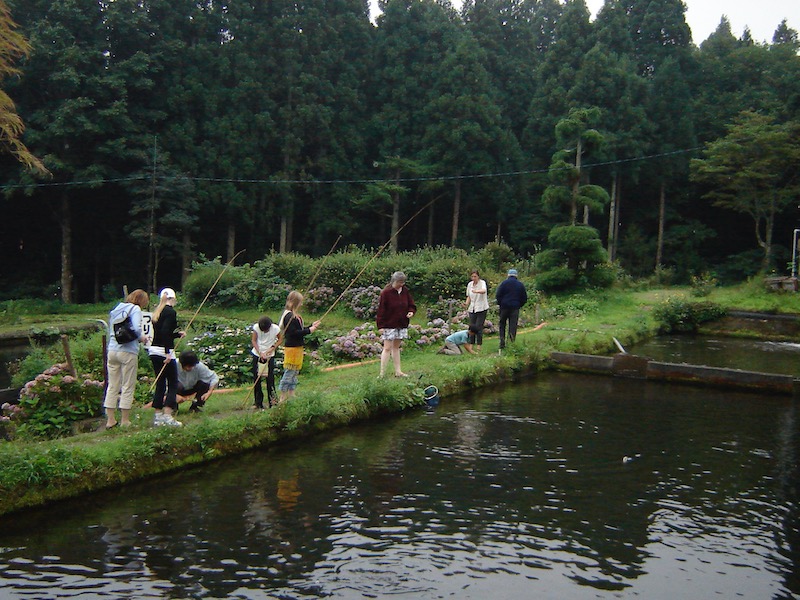
The farm also has a small inn. They cooked and fried the fish for us. The small ones still had their head attached.
It was excellent food - some of the best fish I ever can remember.
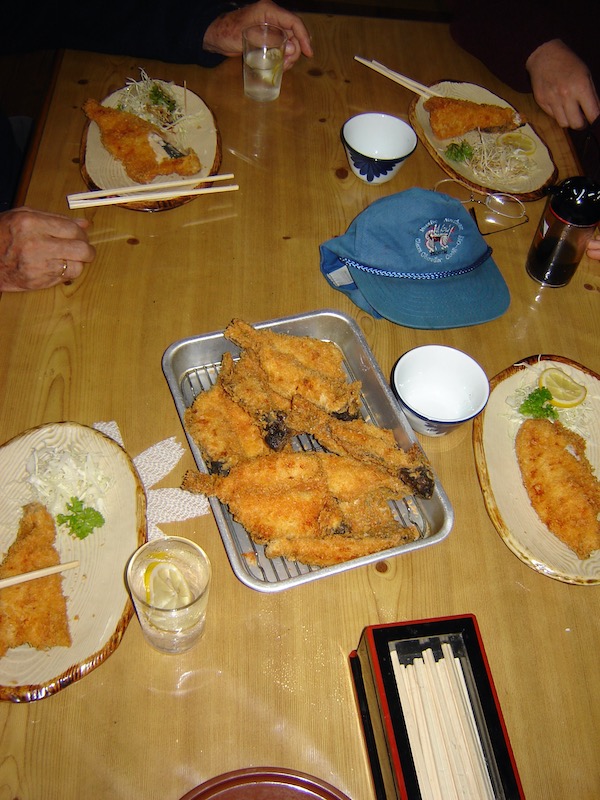
Afterwards, I had a very memorable long conversation around the table with Yuichi (by way of translation) about modern art and the role of beauty.
